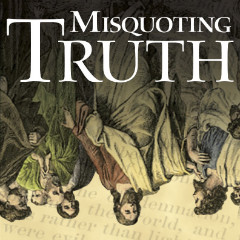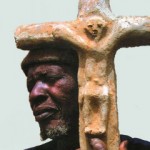
Ehrman argues that New Testament documents are error-ridden to the point of unreliability and that one early Christian sect squashed competing sects who proffered alternate perspectives on Jesus and the Gospel. Not so fast, says Timothy Paul Jones, author of the just-released Ehrman rebuttle, Misquoting Truth (IVP Books, 2007). Jones’ book, written for a popular audience and billed as “A Guide to the Fallacies of Bart Ehrman’s Misquoting Jesus,” handily addresses Ehrman’s major complaints and criticisms in an approach that is unusually irenic and a style that is surprisingly breezy. But Jones’ cool zephyr packs a destructive wallop.
He, for instance, acknowledges the widespread errors in the New Testament documents and provides several examples of copyists and scribes altering the texts by adding to, subtracting from, or simply mangling them. “[T]he 5,700 or so New Testament manuscripts that are available to us may differ from one another in as many as 400,000 places — and there are only 138,000 or so words in the Greek New Testament in the first place!” But then he convincingly demonstrates that:
- most errors have no bearing at all upon key Christian doctrines
- the majority are typographical anomalies that have no discernable impact on the meaning of the texts
- employing textual criticism to compare the 5,700 copies reveals where and when errors were introduced, thereby correcting most
- copyists were by and large concerned with preserving texts, not altering them to advance their own agendas
In short, contra Ehrman, the New Testament texts appear to be highly reliable.
Jones deals just as efficiently with Ehrman’s contention that the early Church suppressed competing Christian sects such as the Ebionites, Docetics, and Gnostics. The early Church — proto-orthodox, as Ehrman calls them — valued first-hand accounts of the life of Jesus and esteemed them as authoritative. Jones demonstrates that the four received gospels, Matthew, Mark, Luke, and John, all had strong oral traditions that linked them to apostolic eyewitness accounts of Christ and his work. Others such as The Gospel of Peter did not and were rejected.
“Even among the earliest Christians,” writes Jones, “testimony that could be connected to eyewitnesses of the risen Lord was uniquely authoritative. That’s why the supposed ‘lost Scriptures’ were lost. . . . In most cases, early Christians knew that these documents came too late to represent eyewitness testimony about Jesus. That’s why they rejected these texts as authoritative accounts of Jesus’ life.” These “lost Christianities” were less suppressed than they were simply dismissed and ignored. The process was protracted and messy, but that is why they eventually faded into obscurity.
An unexpected bonus in Misquoting Truth is a biographical comparison of these two authors. Ehrman, who started out a believer, lost his faith as he grappled with the problems that he and Jones cover in their respective books. Jones almost went the same route. Faced with errors in the New Testament documents, Jones began to doubt the whole Christian story. Careful and dogged study led him out of his doubts and he emerged with a renewed and stronger faith — but not by ignoring the issues raised by scholars such as Ehrman. “Though I mourn the death of Ehrman’s faith,” writes Jones, “I must admit that he has raised many fruitful questions — questions that cannot be blithely ignored.”
Rather, they should be answered, something Misquoting Truth admirably does.












